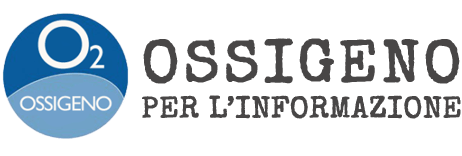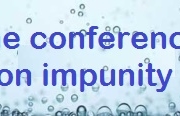Press Freedom: Is Italy the black sheep? No, it isn’t and why
Questo articolo è disponibile anche in:
![]()
Rankings place Italy 52nd in position, behind all other continental European countries. How they are compiled and by whom. How they can be corrected.
In 2017, Reporters Without Borders in its Press Freedom Indexes ranked Italy 52 out of 180 countries, after Malta (49), France (39), Spain (29) and Germany (19). In 2016, the same French organisation ranked Italy in a lower position as 73rd. The year before, the evaluation was even worse, with Italy appearing as 77th. It is not clear why, since the methodology is not scientific and the evaluation process is not transparent. What we do know is that Italy has appeared last of all European countries over the last ten years. In Freedom House’s Freedom of the Press Scores as well, Dante Alighieri’s country did not receive a better evaluation: it appeared to be one of the few European countries were the press is considered “partly free”. As things stand now, it is highly predictable that in the scores that will be published in May, Italy will still get a low position in ranking that will be hard to explain and justify as in the previous years.
Italy is not the black sheep, but it appears so because the evaluation criteria are not the same between Italy and the other countries. Then, if things don’t change, also this year, the most serious violations will weigh upon Italy more than for the other European countries.
The key role will be played by: the high number of threatened journalists (Ossigeno certified 423 attacks in 2017), nineteen journalists (19) protected with round-the-clock police protection, other one hundred and sixty-seven (167) were protected by less effective surveillance measures, more or less five thousands journalists saw the vexatious legal charges against them dismissed. These data were communicated from the Italian Minister of the Interior, on December 6th, 2017. Therefore, it is probable that once more Italy will be pictured as a country were the press is partly free, but also as the black sheep, the last car of the European train, the European country were the freedom of the press is less protected of all. Probably, things will go this way, but this is not the truth. Ossigeno has long been advocating that Italy would not receive this ranking if press freedom would be evaluated in the same way and with the same criteria for every country and rankings would be created in a rigorous way applying transparent evaluation criteria. We are still on time to avoid this bad result and this is why that Ossigeno will take this opportunity to repeat once more its objections in the hope it will be heard more than in the past.
It is true that such worrying data are not published in any other European country with regard threats to journalists. It is also true that the Italian situation is serious and worrying. We are in first line in raising our voice with the support of the data we collect. However, in order to make comparisons with other European countries, homogeneous data should be available showing verified attacks in the same active and thorough way. However, there is a lack of these data.
Moreover, the methodology that leads to give a certain evaluation should be open to confront, transparent and verifiable. There is not such methodology, as Ossigeno has always highlighted.
Why this operative way should continue? Why to keep declaring that Italy is ten, twenty, forty positions behind other European countries and the freedom of the press is guaranteed in the worst way? Who will benefit such evaluations? Why should we keep to proceed in such an approssimative way?
Easy predictions can be made in such matters and Ossigeno will have to take distance once more from evaluations that damage its work, that are not conducted with a scientific methodology, that not portray the reality, that do not help those who daily work to break the silence on the most serious violations in the country, those who start from concrete data to fight against the root causes of such violations.
Time has come to avoid all this. That would start by carefully reading data about Italy that are public and shared by Ossigeno in details and by explaining that, if in this country so many violations and serious attacks to journalists are reported, it is is just because, in spite of other countries that are apparently wealthier, a scientific observatory actively work to take the violations to the surface by breaking the silence that surrounds them and hides them.
Ossigeno does not say that the situation of freedom of information is not free. However, Ossigeno stands to say “no” to any improper comparison and wrong conclusions.
We would like to remember to those who don’t know that the impressive data about Italy come from the monitoring activity of violations of freedom of expression and press freedom, a research activity that daily involves many professionals.
Someone would need to explain, if possible, how these data can be compared with the more reassuring ones of other counties where there is not any observatory using the same energies and showing the same commitment to face the issue.
To our knowledge, for all countries that are used as a positive comparison towards Italy by classifying them as freer, there is not a single observatory that operates a reporting activity such as Ossigeno in collecting, verifying data and for credibility. There is not an observatory that will advocate the Government and other institutions to recognise the problematic dimension of the phenomenon and to make commitments to fight against it.
We know that in other countries violations of freedom of the press and the the most serious attacks to journalists and bloggers are sporadicly collected on the basis of facts reported in news articles.
Those who report on such attacks do not have autonomous survey methods and, consequently, evaluate freedom of the press on the basis of opinions, subjective perceptions on the matter from pooling the responses of experts to a questionnaire in each country concerned: in short, on the basis of informations unverified and unverifiable.
Ossigeno has already raised this point towards those big organisations that publish press freedom rankings applying those methods we have described. We noted that such rankings are not reliable. They might take some attention in the front lines on the newspapers, but, on the other hand, they hinder those independent organisations that work at the national level to promote press freedom.
This is not a small issue. Actually, this is the very first one, in times when we are witnessing to the progressive reductions of spaces historically occupied by the press all over the world and in democratic societies as well, we can see that this negative trend does not attract the attention of public institutions, even when it comes from many sides, such as national and international observatories. Crearly, the approximate figures and the general call are not effective.
We must overcome this serious situation. We can do this by making this call credibile, effective for the strength of its factual basis.
We can act by promoting in each European country the launch of an active monitoring of the violations, a systematic data collection, a transparent ranking. When we will have such reliable and homogenous data we will persuade our authorities to implement effective measures and to amend its legislations.
In Italy, relying on verified data based on a thorough reconstructions on their factual basis, Ossigeno has reached an important goal: to raise public awareness year by year. It enhanced the pressure to get concrete measures able to stop the existing threats and fight against the root causes.
This campaign has already produced the first impressive results.
In 2016, a report from the AgCom (the Italian Independent Authority for Communications)
Ossigeno emphatically say no, and discourages invalid comparisons between Italy, a country where there is in force for many years an independent, continuous, methodical in-depth monitoring of violations of freedom of expression and the press, an active monitoring that involves each day one dozen specialists, and other countries where data on the same phenomenon are either not gathered at all, or gathered in an episodic way or are based on a collection of opinions and unverifiable data.
Ossigeno has already pointed this invalidity out to large organizations that publish rankings of press freedom in various countries on a supposedly comparable basis. These rankings are not reliable, because they are based neither on homogeneous data nor on a transparent methodology. Rankings compiled in this way do not help campaigns to promote press freedom, they harm them.
We need an active monitoring in every country, done with the same transparent methodology, in order to have reliable and truly comparable data on violations of press freedom. Only this way we will be able to obtain from national authorities the required protection measures and from parliaments the necessary legislative updates.
In Italy, year after year, with leverage from its irrefutable data because they are based on the detailed reconstruction of the events that have happened, Ossigeno has raised attention and pressures have grown for firm action to counter persistent threats and address their root causes.
Ossigeno’s campaign is producing the first results.
In 2016, a report from AgCom (the Italian Communications Regulatory Authority) stated that the pressure against free information due to intimidation and threats, is one of the two problems which most concern Italian reporters: the other problem is the widespread precarious working conditions with very low pay for reporters.
In December 2017, the Ministry of the Interior established a “consultation panel” on threats against journalists, with the participation of trade unions and other organizations that represent journalists.
First in 2012, and again in 2015, the Anti-Mafia Commission of the Italian Parliament took account of data from the monitoring organization Ossigeno per l’Informazione concerning the scale of such intimidation. After a twelve months’ inquiry, the Committee has published two detailed reports that document the actual situation and contain formal recommendations to the Parliament and government for legislative actions to provide a safer environment for journalists.
ASP (wt-if)







Leave a Reply
Want to join the discussion?Feel free to contribute!